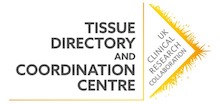What are samples?
A sample can take many forms. It can be a piece of human tissue taken from a healthy or a diseased part of the body, but it can also be a sample of bodily fluid such as blood, urine or saliva. The reason samples are taken is to allow researchers to perform tests on ‘real’ material to gain greater understanding of what is happening in the patient. For example, a researcher may wish to compare a sample from a person when they were healthy with a sample taken from someone who has a certain disease, such as cancer. This would allow the researcher to look for differences between the healthy and diseased tissue.
How are samples taken?
Usually, taking a tissue or blood sample happens during a routine procedure. For example, if your doctor requires a sample to be taken to aid in your diagnosis or treatment, there may be some left over which is not needed for the test. Although not required for your direct care, this sample could be invaluable to researchers for future study. So, either the sample could be stored for future studies or thrown away. A person working with a biobank would always ask for your permission to store the remaining sample in the local biobank. Tissue or blood samples may require an additional procedure to be performed, but your consent is needed to allow this to happen.
What is a biobank?
Biobanks are places that store human biological samples for future use. They are also known as bio-repositories, bio-resources or tissue banks. These biobanks are solely for research, they are different to other organisations that collect tissue and blood for direct patient care such as organ or blood transplant. Some biobanks store samples in order to answer a very specific question about health, while others collect for future use without knowing exactly how the tissue will be used. Samples may be collected from a particular population with either good or ill health, or from people with particular diseases, like breast cancer. Biobanks are found in hospitals, universities, charities and pharmaceutical companies.
Although they will be different in what they do, biobanks can only store samples if they follow the required legislation in the UK. Human Tissue Act (2004), in England, Wales and Northern Ireland, regulates all organisations that remove, store and use human tissue for research as well as other related topics such as medical treatments, post-mortem examination, education and training, and display in public. Scotland has different provisions depending on whether the tissue or blood to be used in research is taken from living or deceased donors. The Human Tissue (Scotland) Act 2006 regulates the donation of tissue from the deceased and tissue donation from the living is controlled by requiring NHS Scotland Boards to be accredited. These provisions are there to ensure that trust is maintained between the donor of the samples and those people and organisations that store and use the samples at a later date. As a result, there are certain events you can expect to happen if a biobank ever approaches you.
Consent
The cornerstone of all guidance in the UK is that people donating samples must be informed, and more importantly understand how their samples and the data about them (and their samples) may be used – this is known as ‘informed consent’. When donating samples, you are given an information leaflet explaining the process of donating and storing samples and a form to give your consent to this. Not all consent forms are the same and not all biobanks operate in the same way, however a local Research Ethics Committee will have approved these forms regardless of the biobank. The role of this independent committee is to assess whether the consent process is fair and clear to those being asked to donate samples. If you are approached to donate your samples, you should ensure that a Research Ethics Committee has approved the forms. Read our ‘what to expect and know when donating samples’ article for more information on this.
How are samples stored?
Samples are stored differently, depending on what kind of sample it is, what storage methods are available at the biobank and how researchers will need to study the sample. Generally speaking, samples are fixed, frozen or fresh.
‘Fixed’ samples, usually tissue, are stored at room temperature within paraffin wax blocks. The researcher can then slice off a piece of the block to study the structure of the tissue, leaving the rest of the tissue fixed in the wax block, unused and available for other researchers. There are still samples preserved from the Victorian period with this method.
‘Frozen’ samples, such as tissue, blood cells or plasma, are stored in small tubes in racks either placed in a container surrounded by nitrogen gas (and above liquid nitrogen) or in a freezer – like the one you use at home but kept at very low temperatures. Samples can be kept for many years in this way.
‘Fresh’ samples, are not preserved for long-term storage but are kept in chemicals and refrigerated to keep them fresh until a researcher can use them. Fresh samples can be used for up to 24 hours after they are taken, depending on the type of sample and the potential use. These samples are very precious and usually require a specialised biobank in order for them to be used. Since fresh tissues can provide a close match to what is happening in the donor, they can, for example, be used to test new medicines, discover the best dose to give and identify possible side effects.
Find out more:
If you are curious to know what it is like donating samples to biobanks, you can:
Read our article outlining what to expect when donating samples
Visit the Human Tissue Authority’s frequently asked questions pages
Visit Healthtalk.org to hear and read people’s personal experiences of donating
